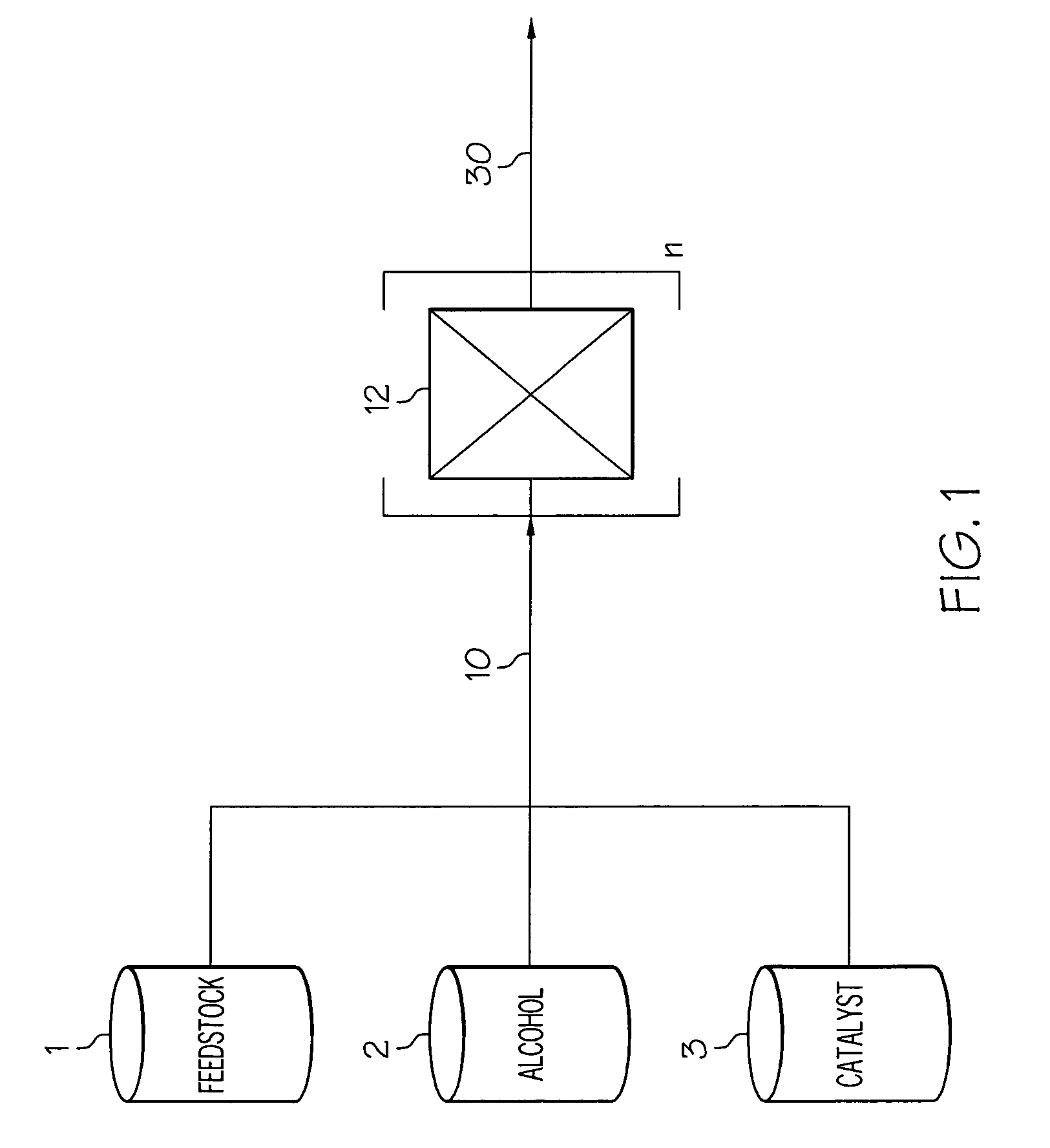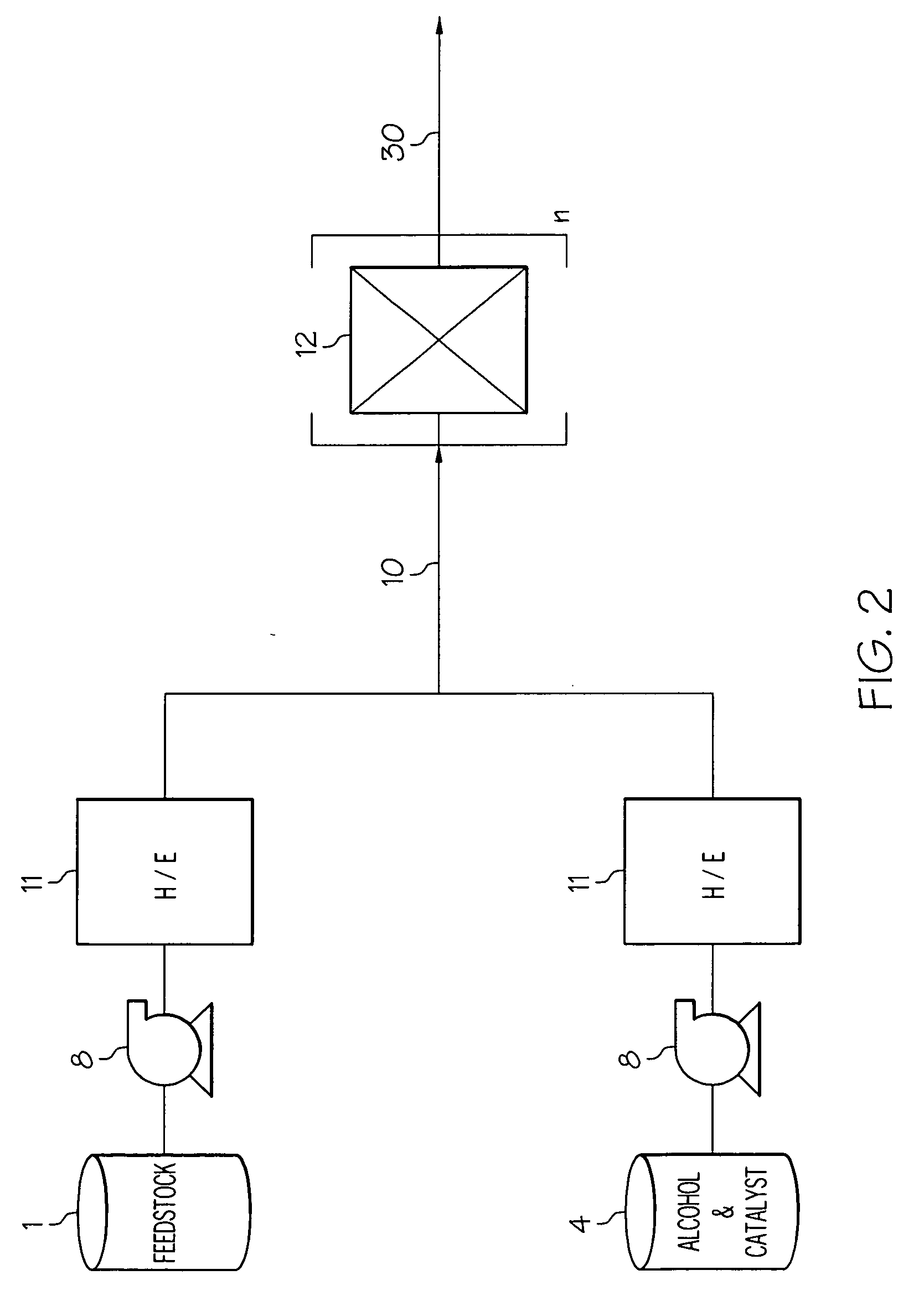Apparatus and method for producing biodiesel from fatty acid feedstock
- Summary
- Abstract
- Description
- Claims
- Application Information
AI Technical Summary
Benefits of technology
Problems solved by technology
Method used
Image
Examples
example 1
[0043]A reaction mixture was prepared by combining the reactants from the two holding tanks to comprise a molar ratio of 1 part oil, 6 parts methanol, and 0.219 parts NaOH. Four separate runs were conducted using the reaction mixture. The results of the runs are shown in Table 1 below. In a first run, the reaction mixture was passed through one cavitation apparatus at a temperature of 100° C., a residence of time of 0.12 microseconds in the hydrodynamic cavitation zone and a pressure differential across the orifice of 250 psi. In a second run using the same molar ratio, the reaction mixture was passed through two cavitation apparatus in series with each other at a temperature of 100° C. A residence time of 0.12 microseconds and a pressure differential of 250 psi were obtained for the first cavitation apparatus and a residence time of 0.17 microseconds and a pressure differential of 120 psi were obtained for the second cavitation apparatus. In a third run using the same molar ratio, ...
example 2
[0045]Further experimentation was done with reaction mixtures at different temperatures. Six runs were completed using four cavitation apparatuses in series. Residence times in the hydrodynamic cavitation zones of each apparatus was held constant at 0.12, 0.17, 0.17, and 0.25 microseconds for the first, second, third, and fourth cavitation apparatuses, respectively. Pressure drops of 250, 150, 120, and 60 psi were also maintained for the first, second, third, and fourth cavitation apparatuses, respectively. A molar ratio for oil / methanol / NaOH was held at 1:6:0.219 for runs one, four, five, and six and a molar ratio of 1:6:0.217 was held for runs two and three. The temperature of the reaction mixture started at 60° C. for the first run and increased to 80° C. for the second, 90° C. for the third, 100° C. for the fourth, 120° C. for the fifth, and finally 150° C. for the sixth run.
TABLE 2shows the results of the second experiment.Fatty acidResidence time in the localsource / hydrodynami...
PUM
 Login to View More
Login to View More Abstract
Description
Claims
Application Information
 Login to View More
Login to View More - R&D
- Intellectual Property
- Life Sciences
- Materials
- Tech Scout
- Unparalleled Data Quality
- Higher Quality Content
- 60% Fewer Hallucinations
Browse by: Latest US Patents, China's latest patents, Technical Efficacy Thesaurus, Application Domain, Technology Topic, Popular Technical Reports.
© 2025 PatSnap. All rights reserved.Legal|Privacy policy|Modern Slavery Act Transparency Statement|Sitemap|About US| Contact US: help@patsnap.com



